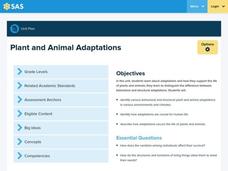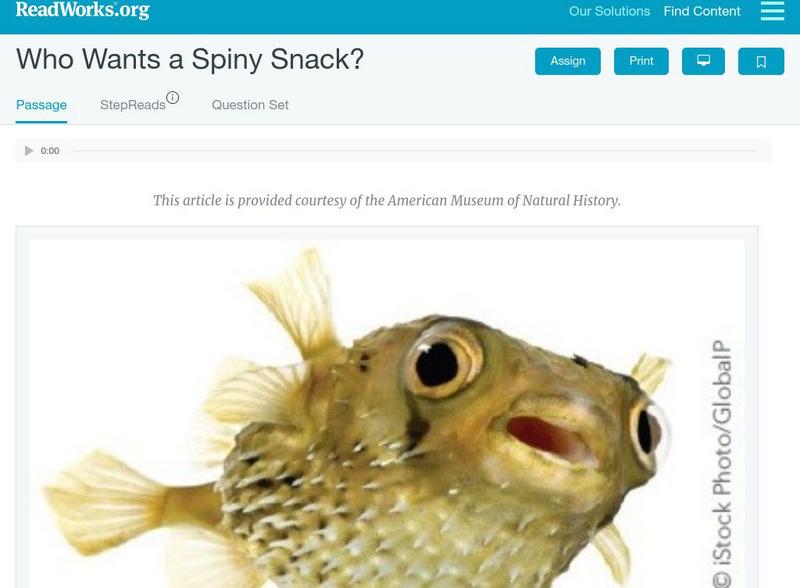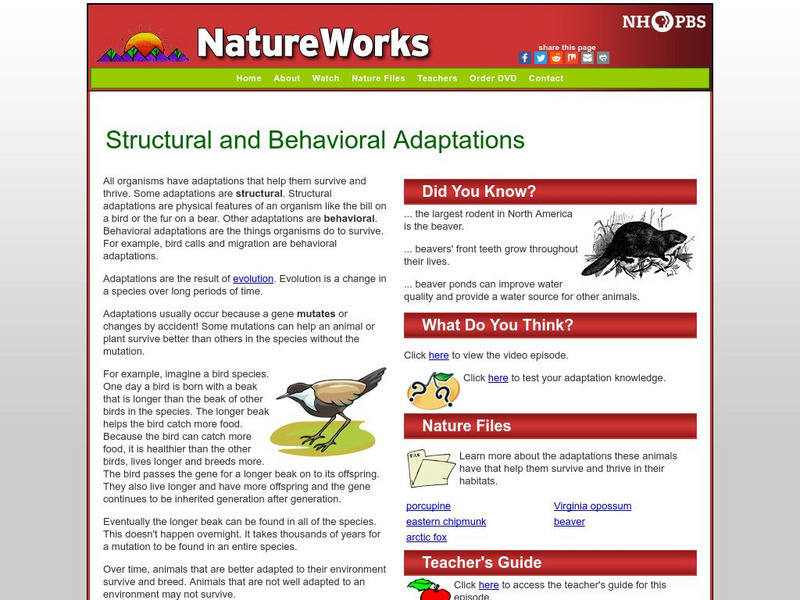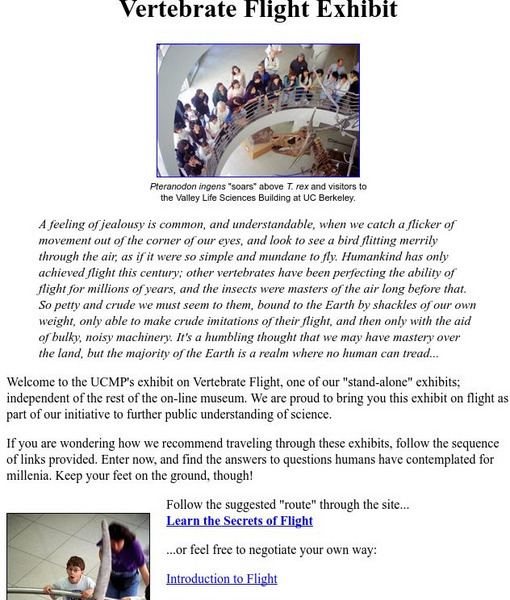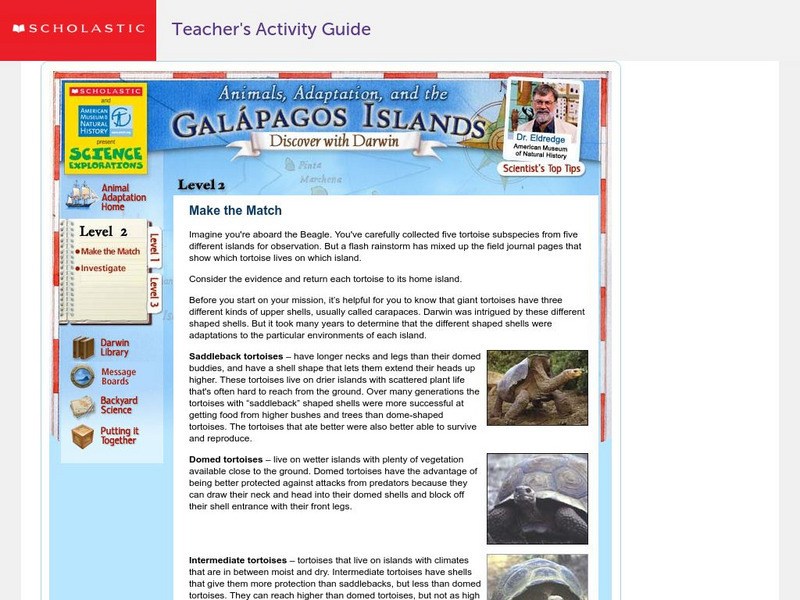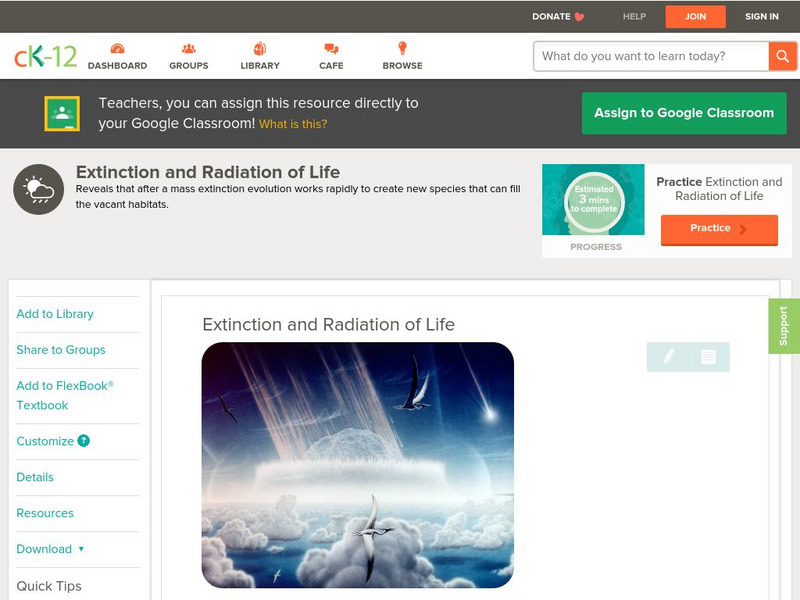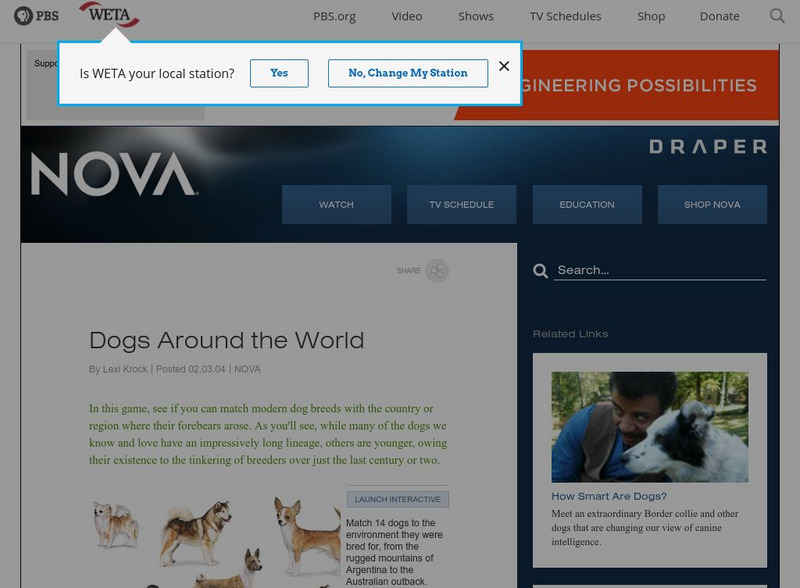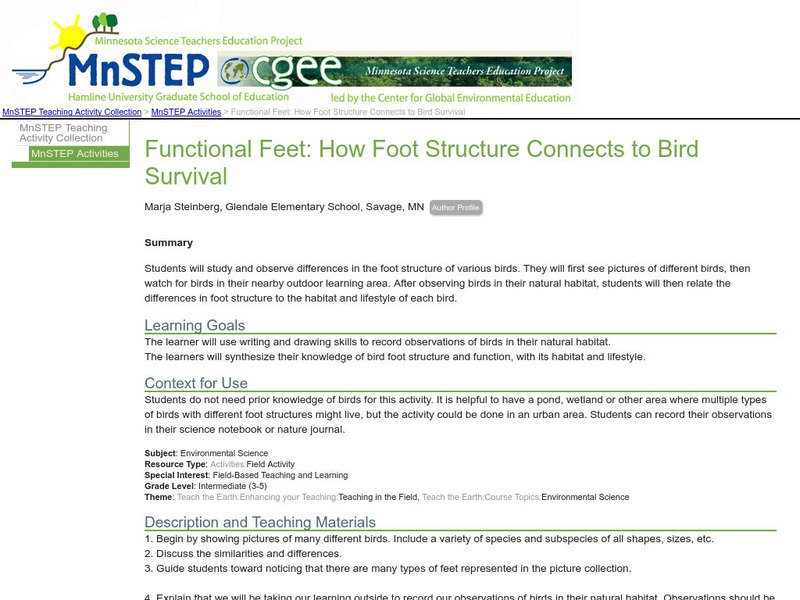Curated OER
AMPHIBIAN RESPIRATION
Learners describe the structural differences in the respiratory systems of aquatic and terrestrial vertebrates and explain the motivation for these structural adaptations in reference to the differences in habitat.
Pennsylvania Department of Education
Plant and Animal Adaptations
Fourth graders identify behavioral and structural adaptations to plant and animal life. In this unit overview, 4th graders discuss the importance of variation and adaptation in a species survival. This is a unit overview and does not...
McGraw Hill
The Mc Graw Hill Companies, Inc.: Adaptation
Evolution, natural selection, sexual selection, coevolution, convergent evolution, mimicry, and coloration, are the topics examined in this thorough site. Assess your comprehension of the material presented by delving into the learning...
PBS
Pbs Learning Media: Bird Food and Bird Beaks
There are almost as many types of bird beaks as there are types of food that birds like to eat. This collection of images shows a wide range of beaks and the types of foods handled by each.
PBS
Pbs Learning Media: Seeing Through Camouflage
This interactive feature from the NOVA: "Leopards" Web site presents a wide variety of ways in which animals use coloration to their advantage.
Science Education Resource Center at Carleton College
Serc: The Opposable Thumb as a Human Adaptation: Thumb Taping Lab
Young scholars conduct a short experiment to determine the importance of the opposable thumb by taping their thumb to render it useless while they proceed to do an everyday activity. In the end students will have the opportunity to...
PBS
Nova: Seeing Through Camouflage
See if you can identify the type of camouflage shown in 12 different animals. Types of camouflage include mimicry, disguise, disruptive coloration,and concealing coloration.
Other
Project Beak: Adaptations: Build a Bird
Build a bird by choosing specific structures to match the environment, then see how you did by calculating the survival rate.
Read Works
Read Works: Passages: "Who Wants a Spiny Snack?"
[Free Registration/Login Required] The passage "Who Wants a Spiny Snack?" focuses on the Pufferfish and how it has adapted to protect itself from predators in the ocean. A comprehension question set with answer key is provided. A Step...
Discovery Education
Discovery Education: Reptile Adaptations
In this lesson plan site, students examine the changing traits that have enabled reptiles to live in their environments. Interesting information and activities about reptiles are found on this site.
Smithsonian Institution
Smithsonian Learning Lab: Looking at Bird Beaks
Use this activity as an introduction to adaptations. Students will view video clips of birds and formulate their own observations and explanations for the different types of bird beaks and how they are used.
Huntington Library
Huntington Library: Garden Lesson Plans: Learning From Leaves: Adaptation [Pdf]
A scavenger hunt where students find and study examples of leaf adaptations for different environments. This activity is designed to be used on a visit to botanical gardens or greenhouse but could be adapted and used with specimens in...
PBS
Pbs Learning Media: Adaptive Radiation: Darwin's Finches
Finches on the Galapagos Islands have evolved to exploit almost every possible niche. This diagram shows the range of food sources available on the island and the different beak shapes adapted to exploit each of them. Includes background...
PBS
Nh Pbs: Nature Works: Communication
This comprehensive site describes how communication is an adaptation that is important for survival.
PBS
Nh Pbs: Nature Works: Structural and Behavioral Adaptations
This effective site focuses on how structural and behavioral adaptations help organisms survive and reproduce.
PBS
Nh Pbs: Nature Works: Coloration
This competent site describes how structural adaptations help organisms survive. Deceptive and advertising coloration are explained.
Better Lesson
Better Lesson: Survival of the Fittest
Fins, gills, claws, wings, each has a special purpose in helping an animal to survive. Students will look at how animals have different parts that help them to adapt to their habitat, and to avoid predators or capture prey. Included in...
University of California
Ucmp: Entrance to the Vertebrate Flight Exhibit
This University of California Berkeley page provides information on the evolution of vertebrate flight and includes links to the following topics: Introduction to Flight, The Physics of Flight, Gliders and Parachuters, The Evolution of...
Scholastic
Scholastic: Science Explorations: Make the Match
See if you can match Galapagos Island Tortoises with the particular islands they live on. You can explore the islands to learn more about the habitats they contain.
Smithsonian Institution
Smithsonian National Zoo: Bird Bill Matching Game
Can you identify the purpose of different bird beaks? Read up about the different types of beaks and then you'll apply your knowledge by identifying the purpose of different shaped beaks.
CK-12 Foundation
Ck 12: Earth Science: Extinction and Radiation of Life
[Free Registration/Login may be required to access all resource tools.] Describes how species die out, and how new ones evolve to fill the vacant niches.
Woods Hole Oceanographic Institution
Woods Hole Oceanography Institute: Adaptations to Light
View several pictures of ocean life through the eyes of scientists and staff at Woods Hole Oceanography Institute. This particular slideshow highlights how ocean creatures change their colors in order to either hide from or frighten...
PBS
Nova: Dogs Around the World
Play an interactive game where you can match modern dog breeds with the country in which they originated.
Science Education Resource Center at Carleton College
Serc: Functional Feet: How Foot Structure Connects to Bird Survival
Students study and observe differences in the foot structure of various birds by studying pictures, and then observing the birds themselves. After observing birds in their natural habitat, students then relate the differences in foot...



